Introduction
What Does A Female Robin Look Like: The American Robin is one of the most iconic and beloved birds in North America. Famously associated with the arrival of spring, this species is often recognized by its melodious song and distinctive appearance. While many people are familiar with the male American Robin’s appearance, which is characterized by its bright orange-red breast, few may be aware of what a female robin looks like. In the realm of avian biology, sexual dimorphism is a common phenomenon, meaning that males and females of the same species often exhibit different physical characteristics. The American Robin is no exception to this rule, and understanding the appearance of both males and females is crucial for any bird enthusiast or casual observer.
The male American Robins eggs is often the star of the show, flaunting its striking plumage. Its most notable feature is the vibrant reddish-orange chest, which is framed by a dark grayish-black head, wings, and tail. This distinctive chest coloration is one of the reasons why the American Robin is associated with the arrival of spring, as the sight of these red-breasted birds foraging for earthworms on freshly thawed lawns is a sure sign that winter’s grip is loosening. On the other hand, the female American Robin exhibits a more understated yet equally beautiful appearance. Female robins lack the vivid red chest of their male counterparts.
Instead, they have a pale orange or orangish-yellow breast that is not as intensely colored as the males’ fiery red. This more subdued chest coloration often leads to the misconception that female robins are less colorful or attractive than males. However, their subtle hues and intricate markings make them a sight to behold in their own right. To truly appreciate the female American Robin’s appearance, one must look beyond its chest. These birds have a similar dark grayish-black head, wings, and tail as the males. Their upperparts are adorned with soft grayish-brown feathers, which excellent camouflage when they are nesting in trees or shrubs.
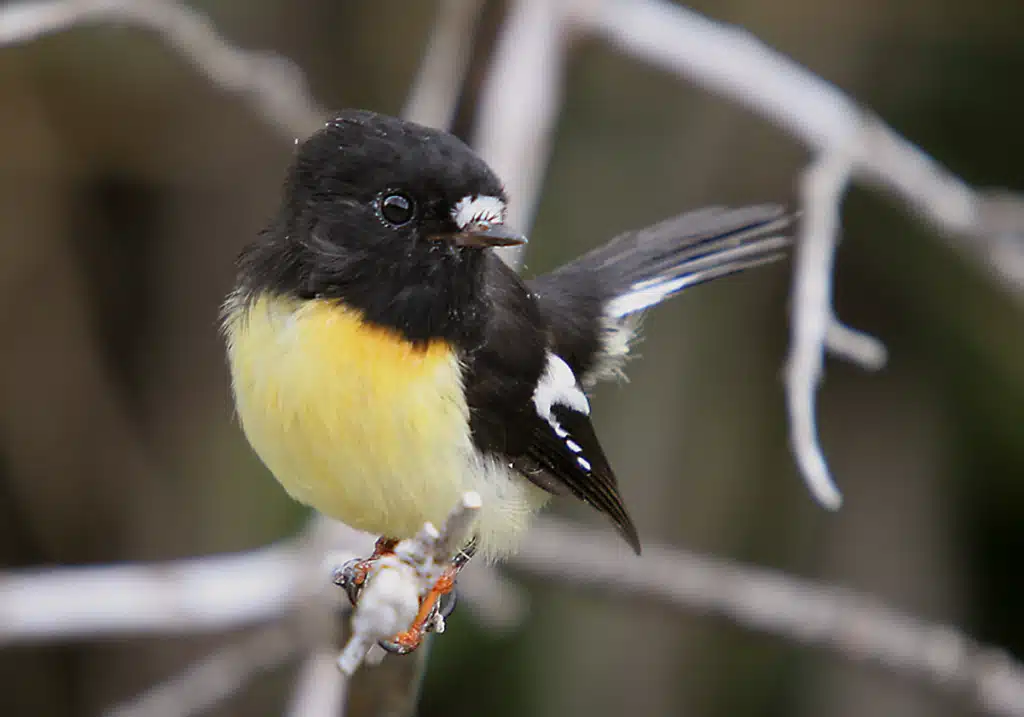
How do you tell a male robin from a female?
Males have rust-colored feathers on their chest, a yellow bill, a black head, and white outlines around their eyes. They also have gray wings and backs. Female robins look similar to males, but their colors are much duller and sometimes blend together, making identification difficult.
The most noticeable difference is the breast color. Male American Robins have a vibrant reddish-orange to orange-red breast, which is their most iconic feature. This striking coloration is often associated with the arrival of spring. In contrast, female American Robins exhibit a more subdued breast color. Theirs is a pale orange to orangish-yellow, lacking the intense red hue of the males. This subtle chest coloration sets them apart and is one of the primary indicators of their gender.
In general, male robins tend to be slightly larger than their female counterparts. They have a more robust and muscular appearance, particularly during the breeding season when they engage in territorial and courtship displays. Females, on the other hand, are often slightly smaller and more streamlined. This size difference can be subtle but is noticeable when comparing individuals side by side.
During the breeding season, males are often more vocal and territorial. They engage in spirited singing and may be observed defending their nesting territory with greater fervor. Females, while not silent, tend to be less vocal and may focus more on nest-building, incubation, and feeding duties. Their behavior reflects their role in the reproductive process.
What is the female robin like?
The female robin bird is usually brown to reddish-brown with some white feathers around the shoulder area. Some species of females can be dark yellowish-brown to white plumaged instead of a brown one. The females usually look darker compared with the male robin, even though they are the same species.
Female robins possess a more understated yet equally captivating appearance compared to the males. Their most distinguishing feature is their breast coloration, which ranges from pale orange to a subdued orangish-yellow. Unlike the vibrant red breast of the males, the females’ chest color is softer and less intense. This subtle hue allows them to blend into their surroundings when they are nesting, a level of camouflage and protection.
The females share several physical characteristics with their male counterparts, including a pointed yellow bill, dark grayish-black head, wings, and tail, and a thin white eye ring. These features are essential for their survival and foraging habits, as they primarily feed on insects, worms, and berries.
Female robins are dedicated and diligent parents. They collaborate with their male partners in building nests, typically selecting sites in trees, shrubs, or even on ledges and other man-made structures. The female’s role in nest construction is crucial, as she forms the basic structure using twigs, leaves, and mud, while the male gathers most of the materials.
Once the nest is complete, the female lays a clutch of eggs, usually numbering between three to five. She then takes on the primary responsibility of incubation. During this incubation period, the female robin sits on the eggs, keeping them warm and protected from potential threats. She is known for her commitment to this task, rarely leaving the nest for extended periods.
Is a female robin the same as a male?
Male and female Robins are actually incredibly similar, sharing the same colours and size. Male Robins are on average bigger than females, however when the female is carrying eggs she will appear larger too. Some believe that males have slightly brighter orange breasts, however this isn’t true.
The most conspicuous difference between male and female robins is their breast color. Male robins have a vibrant reddish-orange to orange-red breast, which is their most striking feature. This bold chest color is often associated with the arrival of spring and is used to attract females during courtship. Female robins, in contrast, have a more subdued breast coloration. Theirs ranges from pale orange to orangish-yellow, lacking the intense red hue of their male counterparts. This difference in chest color is a key visual indicator of gender.
In general, male robins tend to be slightly larger and more robust than female robins. They often have more muscular builds, especially during the breeding season when they are engaged in territorial disputes and courtship displays. Female robins are typically slightly smaller and more streamlined. While this size difference can be subtle, it is noticeable when comparing individuals of both sexes side by side.
During the breeding season, male robins are often more vocal and territorial. They engage in spirited singing to establish their territories and may be observed defending these territories more aggressively. Female robins, while not silent, tend to be less vocal during this time. They focus on nest-building, incubation, and feeding duties, reflecting their primary role in reproduction.
Do female robins also have red breasts?
Both male and female adult Robins have the same distinct red breast and can’t be confused with any other UK bird, though youngsters have a speckled brown breast. Interestingly, the behaviour we see in Robins on our shores is very different to mainland Europe, where they’re a shy and secretive species of the forest.
Male American Robins are well-known for their vibrant reddish-orange to orange-red breast feathers. This feature is their most iconic and eye-catching characteristic. The intensity of the red coloration varies somewhat among individual males, but it is generally bold and conspicuous.
This bright breast color plays a crucial role in attracting females during courtship and is often associated with the arrival of spring. Female American Robins, on the other hand, do not exhibit the same red breast coloration as males. Instead, their breast feathers are typically a pale orange to orangish-yellow color.
This chest color in female robins is more subtle and subdued compared to the males. It lacks the intense red or orange-red hue and is often described as more earth-toned or muted. The difference in breast color serves an essential purpose in the life of the female robin. It helps camouflage and protect when she is nesting and incubating her eggs, allowing her to blend into her surroundings and avoid drawing attention to the nest.
What color are robins breasts?
Key information. The UK’s favourite bird – with its bright red breast it is familiar throughout the year and especially at Christmas! Males and females look identical, and young birds have no red breast and are spotted with golden brown.
The breast of a male American Robin is a vibrant reddish-orange to orange-red. This bright coloration is often described as “brick red” or “burnt orange.” The intensity of the red color can vary somewhat among individual males, but it is generally bold and conspicuous. This striking chest color is one of the most distinctive features of the male robin and is a key characteristic used to attract mates during courtship.
Female American Robins, in contrast, have a more subdued and softer breast color. Their chest feathers are typically a pale orange to orangish-yellow. This coloration in female robins lacks the intense red or orange-red hue of the males. The difference in breast color is a significant visual indicator of gender.
Juvenile American Robins, both males and females, have a speckled or mottled breast that is lighter in color than that of adults. These speckles help camouflage them as they are learning to forage and become more independent. Over time, as juveniles mature, their breast feathers gradually transition to the adult plumage.
What color is the female robin?
The female’s pale orange breast feathers and gray upperparts look washed out and faded compared to the male’s darker, richer colors. A female robin must be well camouflaged in order be safe from predators as she incubates her eggs.
The breast feathers of the female American Robin are typically a pale orange to orangish-yellow color. This chest color is notably different from the vivid red or orange-red breast of the males. The female’s breast coloration is often described as soft, muted, or earth-toned, in contrast to the bold and vibrant chest of the male. This difference in breast color serves purposes in the life of the female robin, particularly during the nesting and incubation periods.
Apart from the breast color, female and male American Robins share many other physical characteristics. Both sexes have a dark grayish-black head, wings, and tail, along with a thin white eye ring. The upperparts of both males and females are adorned with soft grayish-brown feathers. These earth-toned feathers effective camouflage when the birds are nesting and help protect the nest from potential predators.
The subtle breast coloration of the female robin is essential for her role as a parent. When she is incubating her eggs in the nest, her muted plumage helps her blend into her surroundings, making her less conspicuous to potential threats. This camouflage is crucial for protecting the nest and ensuring the safety of the vulnerable eggs and hatchlings. Predators are less likely to spot the female when she is sitting on the nest. After the eggs hatch, the female robin continues to use her subdued plumage to her advantage as she diligently feeds and cares for her young.
Why are robin eggs blue?
Why are robins’ eggs blue? American robins’ eggs are blue due to a pigment called biliverdin, which is deposited on the eggshell when the eggs are laid. Biliverdin is a green bile pigment and is the same pigment that causes some bruises to initially look bluey-green.
The blue color of robin eggs is primarily due to the presence of a pigment called biliverdin. Biliverdin is a green pigment that, when combined with specific structural properties of the eggshell, produces the characteristic blue hue. Biliverdin is a metabolic waste product created during the breakdown of hemoglobin in the developing embryo. It is excreted into the eggshell gland and becomes deposited in the forming eggshell.
The blue coloration of robin eggs serves as a form of camouflage and protection. It helps the eggs blend into the environment, making them less conspicuous to potential predators. When robin eggs are nestled in the nest, their blue color harmonizes with the natural surroundings, such as green leaves and grasses. This camouflaging effect can deter egg-eating animals and birds that might otherwise spot and raid the nest.
The color of the eggshell can also play a role in temperature regulation. Darker-colored eggshells tend to absorb more heat from sunlight, potentially helping to maintain a stable temperature inside the egg. The blue color of robin eggs may contribute to keeping the developing embryos at an optimal temperature, especially during the incubation period.
Does a female robin sing?
Both sexes sing. As with the nightingale, the song is usually delivered from a concealed perch within a bush or a tree exposed perches are infrequent. Autumn and spring songs are distinctly different. The autumn song starts after the moult, from late summer onwards.
Both male and female robins establish and defend territories during the breeding season. While male robins are known for their melodious and complex songs used to declare and protect their territories, female robins may also engage in territorial singing. Female robin songs tend to be shorter and less elaborate than those of males. They often consist of simpler, repetitive phrases and are used to communicate their presence and territorial boundaries to other birds.
Female robins use song as a means of communication with their mates. They may sing to coordinate activities, such as when a male approaches with food, or during courtship rituals. Singing can help strengthen the pair bond between a male and female robin, facilitating their cooperation in raising their young.
Once a female robin has laid eggs and is incubating them, she may sing near the nest. This singing serves to communicate her presence to her mate and possibly to potential nest predators. It’s a way for the female to alert her mate to her location and encourage him to be vigilant in protecting the nest.
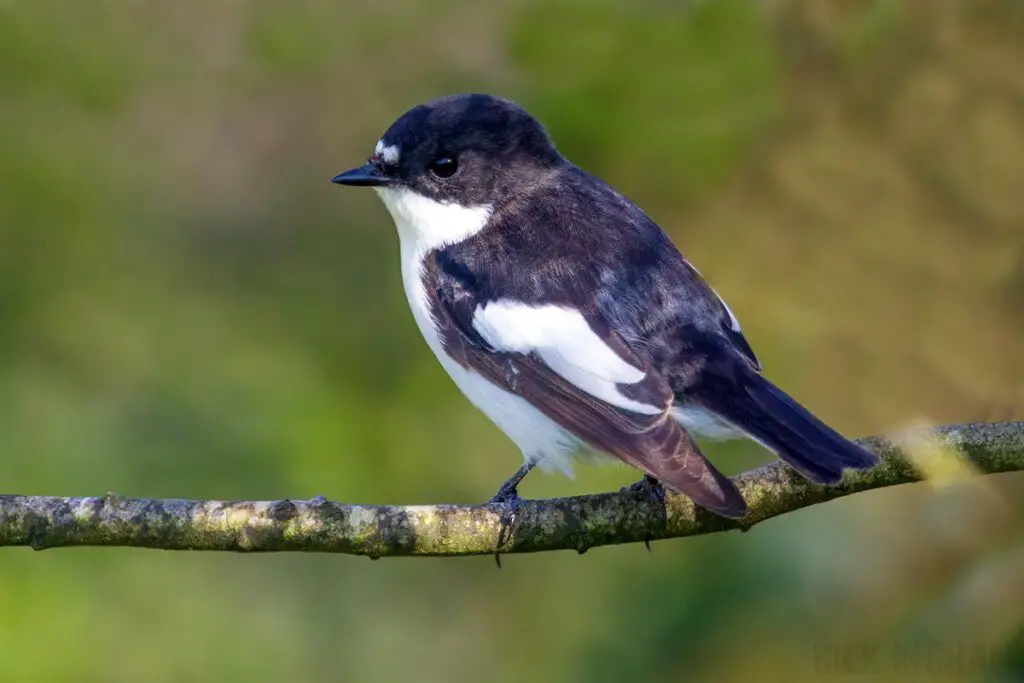
Conclusion
In the world of birdwatching and nature observation, understanding the distinct characteristics of both male and female birds is essential to truly appreciate the diversity and beauty of the avian world. This holds true for the American Robin, Turdus migratorius, where the differences between the sexes might not be as robin striking as in some other species, but they are nonetheless significant and worth exploring. In this exploration of what a female robin looks like, we have uncovered the subtle yet captivating features that distinguish them from their more vibrantly colored male counterparts. While male American Robins boast the iconic fiery-red breast that has earned them their place as harbingers of spring, female robins exhibit a more understated beauty with their pale orange to orangish-yellow breasts.
It’s a testament to the intricate diversity of nature, where each sex serves a unique role in the survival and reproduction of the species. Beyond their breast coloration, both male and female American Robins share common traits, such as dark grayish-black heads, wings, and tails, as well as distinctive white eye rings, pointed yellow bills, and long legs. These features collectively equip them for their ground-hopping foraging style and help them thrive in a variety of habitats across North America. Understanding the appearance of female American Robins is not only a matter of identification but also a window into the species’ life cycle and behavior. These birds are dedicated parents, working tirelessly to build nests, incubate eggs, and feed their young.
Their subtle plumage plays a crucial role in their survival, providing camouflage when nesting and protecting their nests from potential threats. As this exploration of the female American Robin’s appearance, we are reminded of the of paying attention to the details in the natural world. While the males often steal the spotlight with their bold colors and iconic songs, the females possess a unique and enchanting beauty of their own. Each sex contributes to the species’ survival in its own way, highlighting the delicate balance of nature. It encourages us to explore further, ask questions, and develop a greater understanding of the intricate web of life that surrounds us.

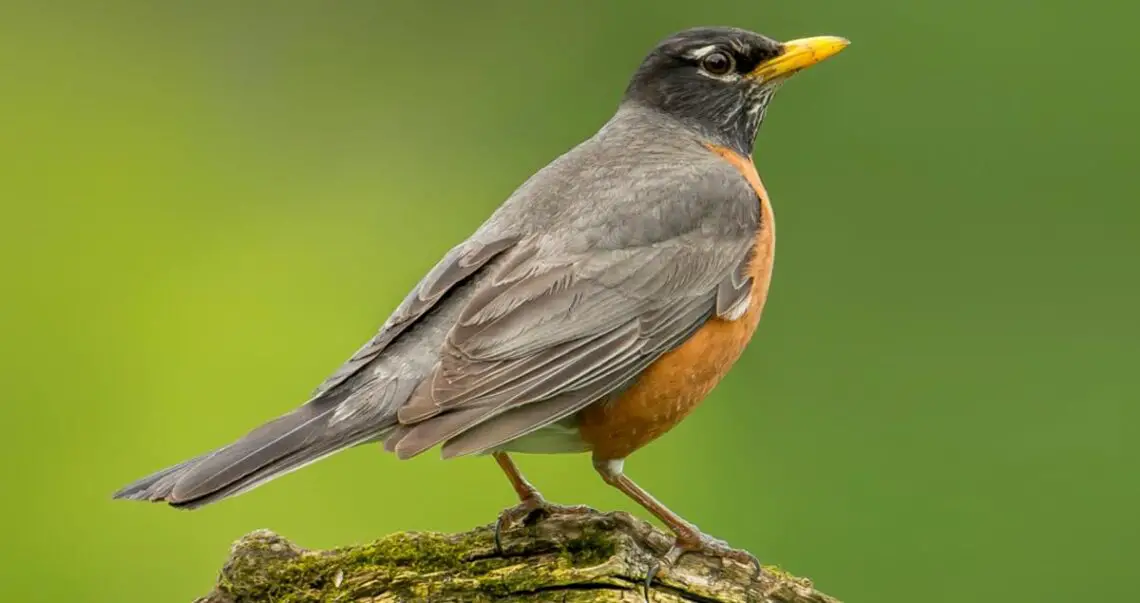
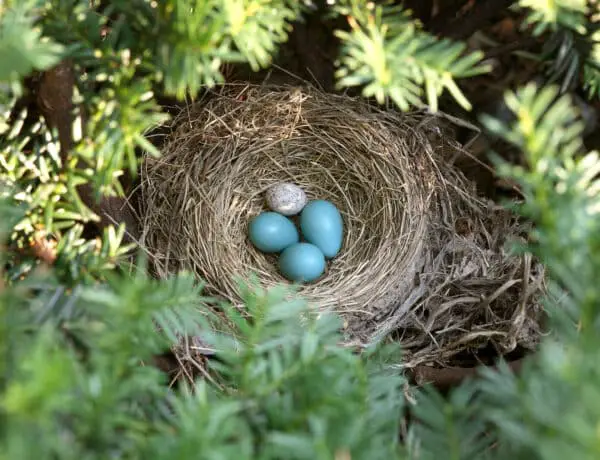

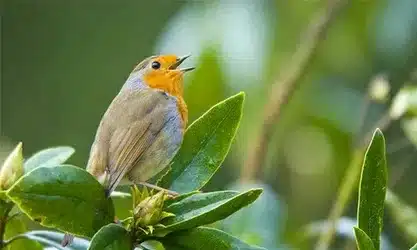
No Comments